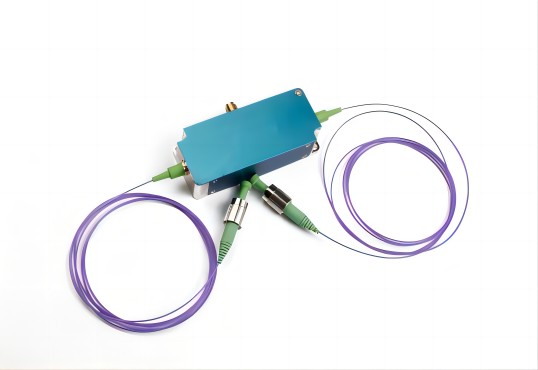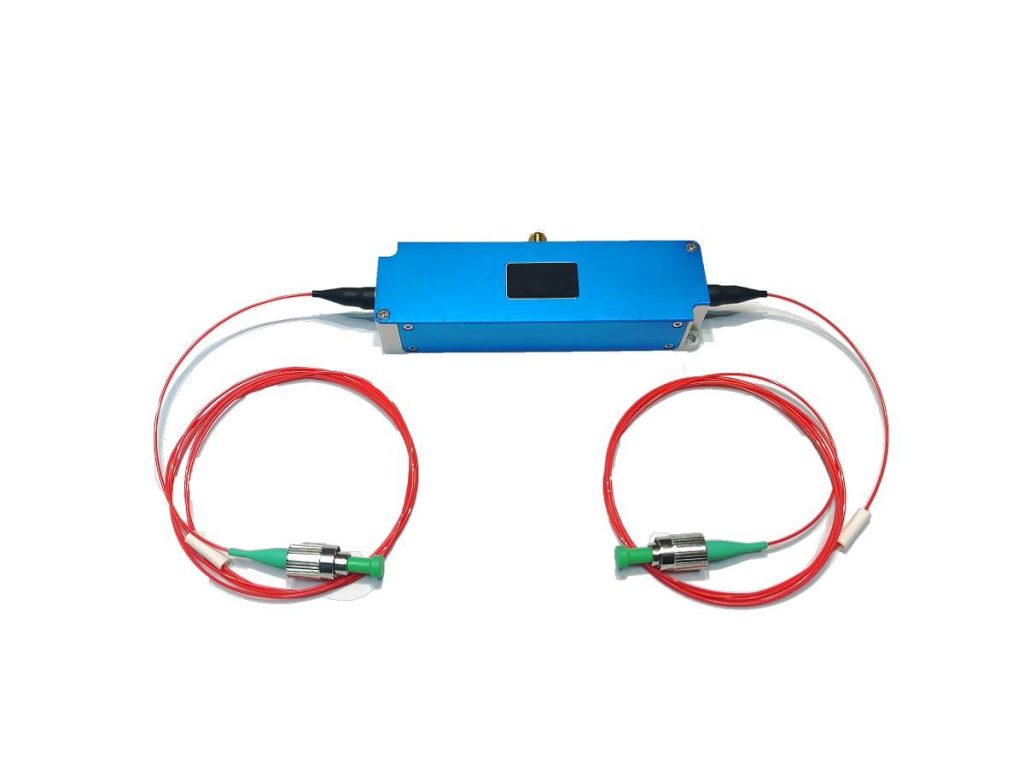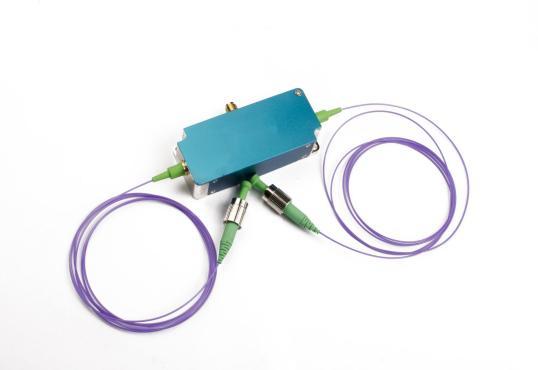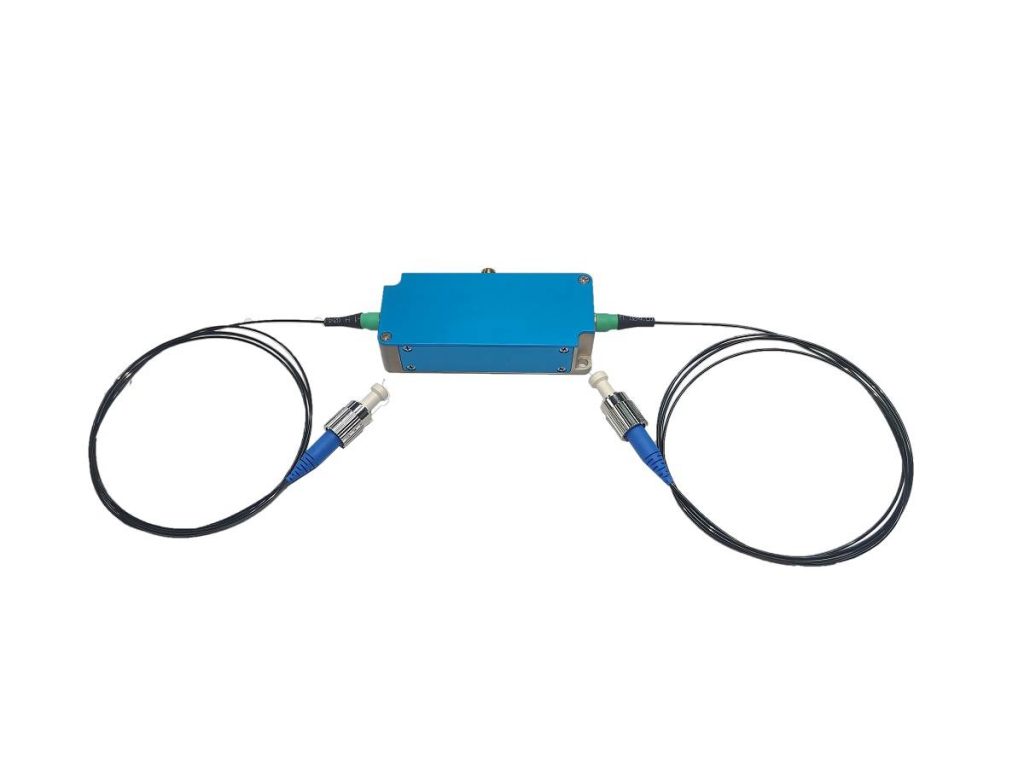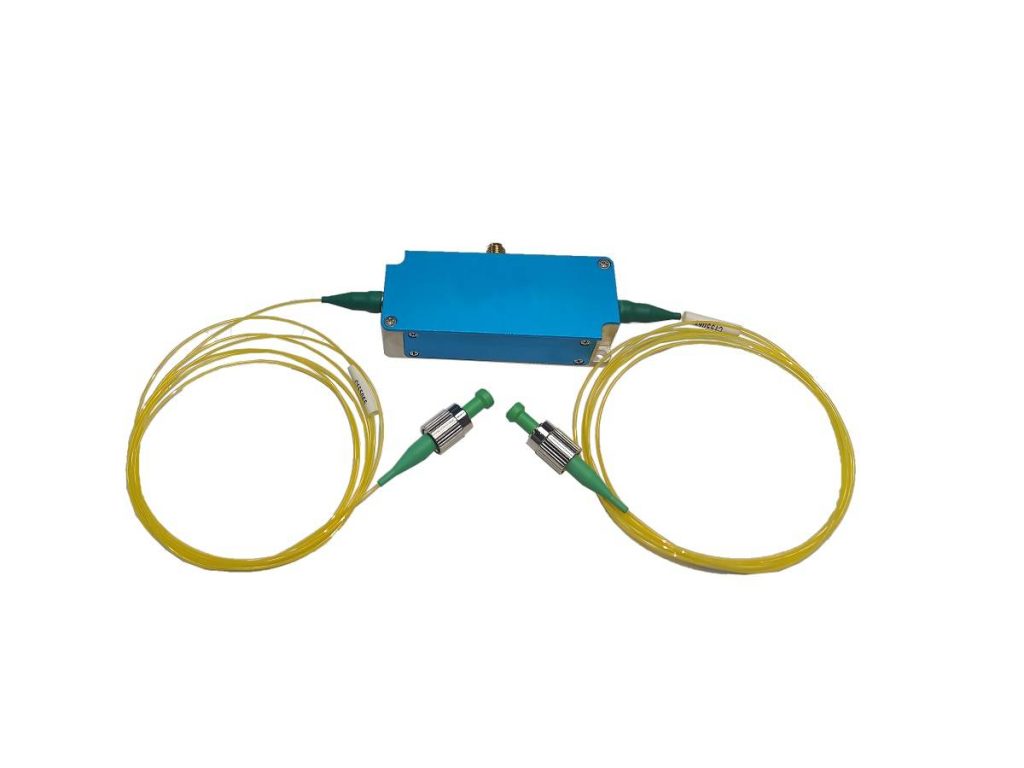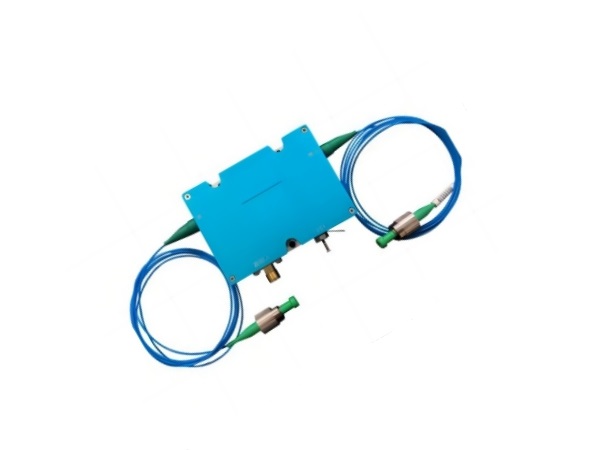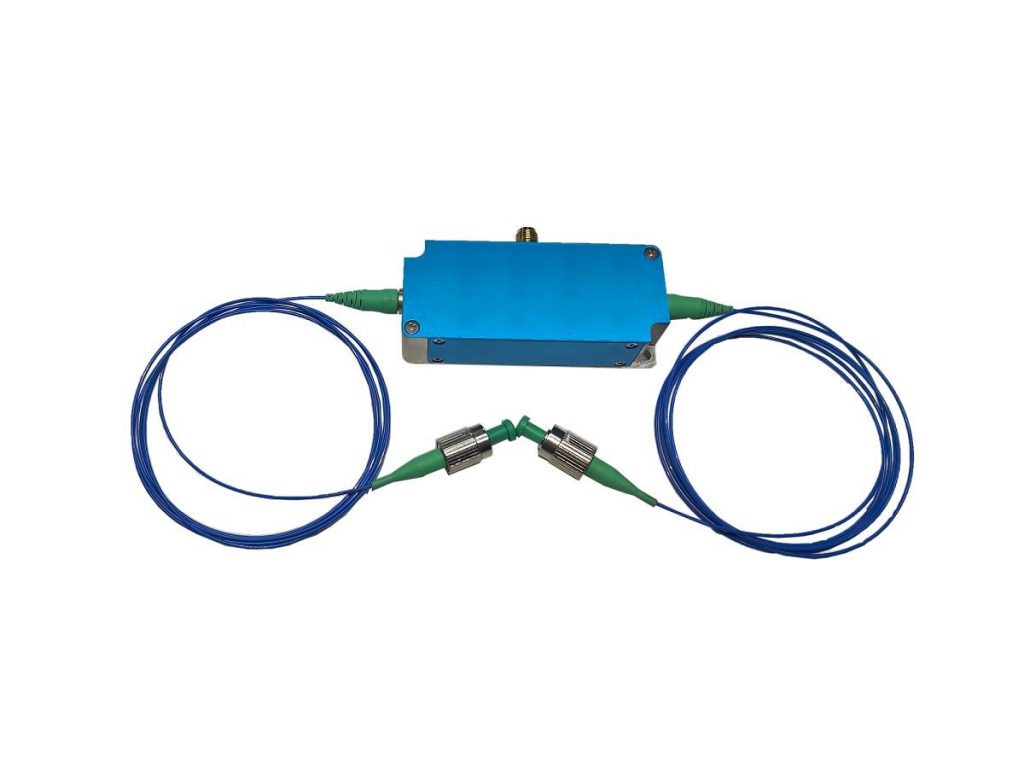What Are The Applications Of Fiber-Coupled Acousto Optic Frequency Shifters In Lidar?
LiDAR, short for laser detection and ranging system, is widely used in self-driving cars, drones, autonomous robots, satellites, rockets, etc. It measures the propagation distance between the sensor transmitter and the target object, analyzes the reflected energy size, amplitude, frequency and phase of the reflected spectrum on the surface of the target object, and thus presents accurate three-dimensional structural information of the target object.
Acoustic-optic frequency shifting is one of the key technologies in the lidar system. According to the requirements of signal processing, the center frequency needs to be moved to beat with the local oscillator light to obtain an intermediate frequency signal. The size of the Doppler frequency shift is obtained through signal processing, and finally the target object information is inverted.
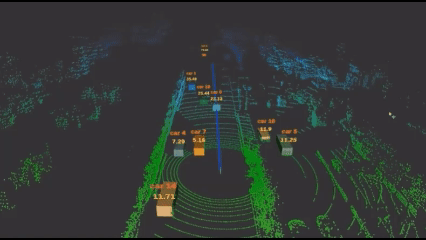
Working Principle Of Fiber-coupled Acousto Optic Frequency Shifter
The acousto-optic frequency shifter is a frequency modulation device that changes the laser frequency by adjusting the driving frequency. It is widely used in laser Doppler velocimetry, optical gyroscopes, and other fields. Its principle is based on the energy conservation of the acousto-optic effect: when the incident photon, diffracted photon and phonon interact, the frequency of the sound wave is superimposed on the frequency of the incident light, that is, ωi±ωs=ωd (ωi is the frequency of the incident light, ωs is the frequency of the sound wave, and ωd is the frequency of the diffracted light).
The frequency shift is the frequency offset between the diffracted light and the incident light, and its value is equal to the frequency of the carrier signal. The positive or negative frequency shift is determined by the incident direction of the acousto-optic effect: the frequency shift is positive when the directions are the same, and negative when the directions are opposite.
The fiber-coupled acousto-optic frequency shifter is optically coupled by adding fiber collimators on both sides of the free-space acousto-optic frequency shifter, making it more convenient to use in fiber-optic systems. When working, the input light enters the acousto-optic crystal through the input collimator. Under the action of the RF driver, diffracted light is generated due to the Doppler frequency shift, and its frequency shift amount is equal to the frequency of the RF signal, completing the frequency shift process.
The first-order diffracted light after frequency shift is transmitted to the end of the output optical fiber through the output collimator, and finally the frequency-shifted light is output. The frequency shift amount and accuracy of the device are mainly determined by the RF power signal. High frequency shift accuracy can be achieved by ensuring that the RF power signal is stable. The output frequency can be changed through CAN communication to generate a stable signal to complete the frequency shift.
In order to improve the system signal-to-noise ratio and achieve precise laser frequency shifting, the fiber-coupled acousto-optic frequency shifter must meet the requirements of low insertion loss, high extinction ratio, high frequency shifting accuracy and high frequency shifting stability.
Insertion loss
In the fiber AOF frequency shifter, the factors that affect the insertion loss are mainly the fiber collimator coupling loss, diffraction loss and crystal reflection absorption loss. In practice, the fiber collimator coupling loss and crystal reflection absorption loss are relatively small, so the diffraction loss is mainly considered. The diffraction loss is determined by the crystal diffraction efficiency. The calculation formula for diffraction efficiency is:
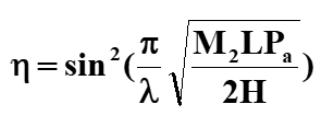
In the formula: M2 is the acoustic-optical figure of merit of the material; L is the acoustic-optical interaction length; Pa is the acoustic power; and H is the acoustic-optical interaction width.
Extinction ratio
In the system, a high extinction ratio is mainly used to eliminate the influence of zero-order light and stray light and improve the signal-to-noise ratio of the entire system. There are two main factors that affect the extinction ratio of the device: the diffracted light and the zero-order light meet the completely separable condition; the driving source switching ratio is large enough to suppress the base noise of the output light.
Frequency accuracy and stability
The frequency accuracy and stability of the driver are related to the accuracy and stability of the frequency shift. Therefore, it is necessary to select an active crystal oscillator with high accuracy, high stability and fast stability as the ideal signal source of the device, and through reasonable circuit design, the power supply of the crystal oscillator can meet the requirements of low ripple, low noise and high stability.
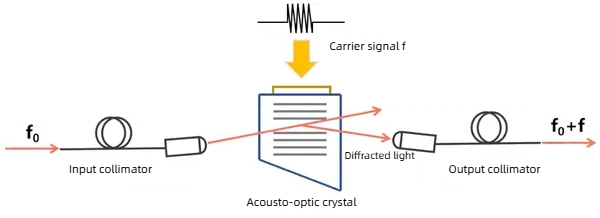
Application of Fiber Coupled Acousto Optic Frequency Shifter in LiDAR
Lidar systems are widely used in the military and meteorological fields. Among them, wind-measuring Lidar, as a mature remote sensing device, can quickly and accurately measure the three-dimensional wind field of the atmosphere. In numerical weather forecasting, it can observe the vertical profile of the three-dimensional wind field, improve the resolution of the measured wind field, and provide strong support for the statistical analysis of the measured wind field and the optimization of the numerical weather forecasting method.
Laser radar detects and identifies targets by measuring the frequency shift of the scattered signal irradiated to the target. People often add a fixed frequency shift in the measurement optical path to achieve the measurement of the frequency shift. Acousto-optic frequency shift has great advantages over this:
(1) The structure of the acousto-optic frequency shifter is compact and easy to integrate;
(2) The acousto-optic frequency shifter has high diffraction efficiency and can achieve high light transmittance;
(3) In the Doppler laser radar system, the maximum measurement speed is directly determined by the frequency shift, so the acousto-optic frequency shifter method is more suitable because its frequency shift is large, usually 107-108 Hz.
Acousto-optic frequency shifters are mainly used in laser radar for distance measurement, speed measurement and other applications.
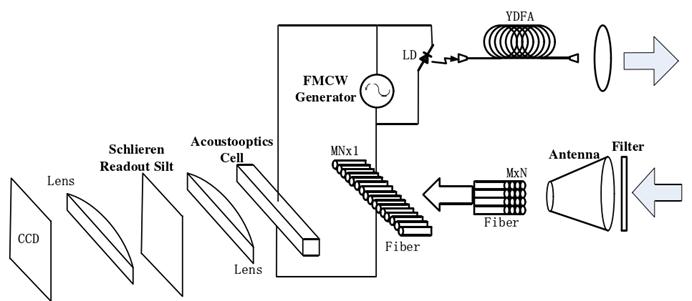
Ranging is a process where a laser generates a light pulse that carries a modulated transmission signal, and the system records the time of transmission or some information that characterizes the transmission time, such as phase or time. After irradiating the target, the pulse returns to the system. At this time, the return signal carries a time delay τ caused by the distance between the target and the system compared to the transmission signal. After receiving the return signal, the return signal and the transmission signal are correlated to obtain the time delay τ. Through the time delay τ, the distance R between the target and the system is calculated. LiDAR ranging obtains distance information by measuring the relative time delay τ between the transmission signal and the return signal. In other words, the process of LiDAR ranging is actually the process of obtaining the time delay τ between the return signal and the transmission signal.
The application of speed measurement is usually reflected in the Doppler velocimeter. The basic principle of the Doppler velocimeter is that the light scattered by the moving particles undergoes frequency shift according to the Doppler phenomenon, and the relative frequency shift is determined by ∆v/v=u/(c-u)≈u/c, where u is the component of the scattered particle velocity in the direction of the scattered light, and c is the speed of light. The speed u can be determined by measuring the beat frequency ∆v of the scattered light and the incident light. However, when the particle flow rate is relatively large, even reaching supersonic speed, the beat frequency will increase accordingly, making it difficult to measure directly. This problem can be solved by using an acousto-optic frequency shifter, that is, using the diffracted light and the scattered light for frequency difference, which greatly improves the measurement range and accuracy of the laser velocimeter.
Technical Challenges And Development Trends
Current technical bottlenecks
- Power limitation: The maximum power under single-mode fiber coupling is usually <5W
- Bandwidth limitation: The working bandwidth of existing acousto-optic crystal materials is usually <200MHz
- Temperature sensitivity: The temperature coefficient of the refractive index of acousto-optic devices is about 10⁻⁵/°C, requiring precise temperature control
Frontier research directions
- Broadband materials: Research on new acousto-optic crystals such as TeO₂-GaP composite materials
- Photonic integration: Development of micro-acousto-optic frequency shifting chips based on silicon photonics
- Intelligent control: Combine AI algorithms to optimize the dynamic response characteristics of frequency shifters
Conclusion
Because of fast frequency modulation, strong stability, and excellent compatibility with other systems, fiber-coupled acousto-optic frequency shifters are crucial components of modern high-performance lidar systems. With the fast rise of autonomous vehicles and intelligent robotics, the technology is pushing the lidar demand even further, further advancing the acousto-optic frequency shifter technology on criteria such as wider bandwidth, higher power, and reduced size. Through the convergence and breakthroughs in material science, photonics, and intelligent control, the infusion and innovation of these technologies will make fiber-coupled acousto-optic frequency shifters even more vital in lidar applications.

